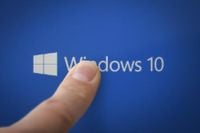Microsoft is sending reminders to users to upgrade to Windows 11 as the end of support for Windows 10 approaches. Scheduled for October 14, 2025, this deadline has prompted the tech giant to notify users through email alerts. Those particularly impacted are users with devices that are unable to run Windows 11, which puts them at a crossroads: upgrade now or face the uncertainties of using an unsupported operating system.
The company has begun notifying Windows 10 users that the support will officially cease on October 14, 2025. The email's subject line is startlingly clear: “The end of support for Windows 10 approaches.” Within the correspondence, Microsoft provides various links to help users check if their devices are compatible with Windows 11. For many, this translates to needing to purchase a new computer, especially if upgrades are necessary due to hardware limitations.
In its communication, Microsoft reassures customers that, while computers running Windows 10 will continue to function post-October 14, they will do so without any updates, potentially leaving them vulnerable to cyber threats. Additionally, the firm notes that some applications may not perform correctly moving forward. Users are hereby warned of the potential risks associated with sticking to an outdated operating system.
Furthermore, Microsoft advocates for recycling older devices when transitioning to Windows 11, emphasizing the product's enhanced security and performance features. Although the email stresses these aspects, it failed to mention the Extended Security Updates (ESU) program, which the company confirmed last year. The ESU program allows users of the general public version of Windows 10 to extend the security coverage of the OS until October 2026 for an annual fee of approximately $30. This option is particularly salient for users hesitant to switch to the latest OS.
Notably, the ESU program will only cover critical security updates for one additional year, without offering new features or bug fixes, meaning users will be left exposed if they opt for this service and do not transition to Windows 11.
Windows 11 has indeed been touted for its redefined user experience, featuring a revamped interface, customizable widgets, and a strong integration of Microsoft Teams. Each improvement is designed to optimize and enrich daily usage of devices, whether for professionals, creators, or everyday users, making it an appealing alternative for those still using Windows 10.
However, the transition hasn't been smooth for everyone. Though Windows 11 is praised for its graphic redesign, improved snap features, and efficient management of virtual desktops, feedback from users has also highlighted performance issues and bugs that persist. Additionally, the operating system's compatibility mainly favors newer generation PCs, which limits the upgrade possibilities for users with older systems.
As October 2025 draws closer, the decision for many remains: transition to Windows 11 now or risk the consequences of unsupported software. With pressure mounts from Microsoft, users who need assurance for their device and applications might find it increasingly difficult to ignore these prompts.
In summary, Windows 10's end is imminent, and Microsoft is keenly pushing users toward Windows 11, highlighting security improvements and performance enhancements. Individuals and businesses alike face a crucial juncture; as the deadline nears, they must evaluate their options seriously to ensure their digital presence remains secure and efficient in a rapidly evolving tech landscape.




